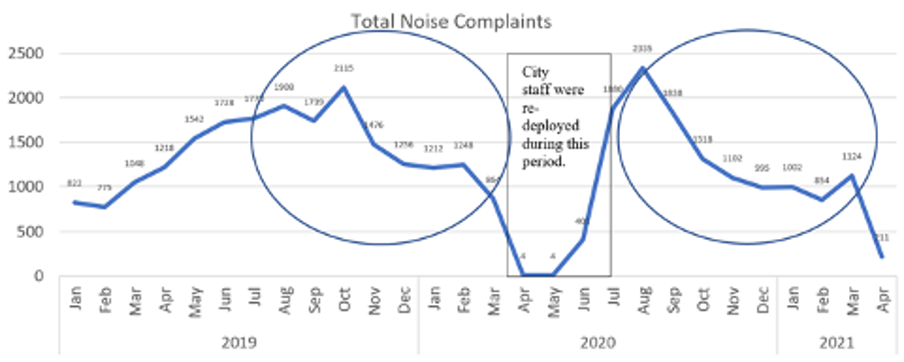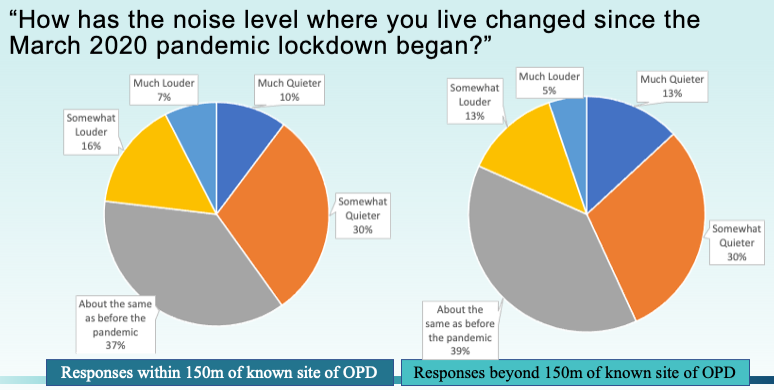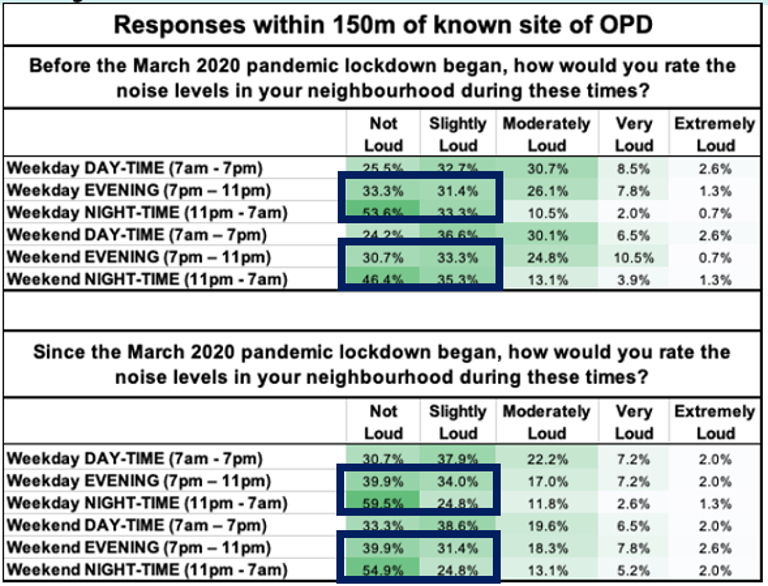News | METRANS, PSR, host Roorda for Impacts of Off-Peak Deliveries
Stop the VideoNews

METRANS, PSR, host Roorda for Impacts of Off-Peak Deliveries
Sunday, November 21, 2021
by Hayley Rundle, USC Master of Urban Planning
On November 11, METRANS and the Pacific Southwest University Transportation Center (PSR) launched their fourth seminar for the Fall 2021 transportation research seminar series. This seminar was entirely virtual to best accommodate Dr. Matthew Roorda from the University of Toronto, Canada. Titled “Impacts of Off-Peak Deliveries in the Toronto Area Before and During the Pandemic,” this event showcased the research or Dr. Roorda and University of Toronto students PhD Candidate Kianoush Mousavi, and MASc Candidate Shang Zhang.
Dr. Matthew Roorda is a Professor of Civil Engineering at the University of Toronto, Canada Research Chair in Freight Transportation and Logistics and the founding chair of the Smart Freight Centre, a multi-university research center. Roorda’s research interests include urban freight transportation, freight planning and operations, freight and passenger travel survey methods, city logistics, agent-based simulation, parking and curbside management, emissions analysis, activity-based travel demand modelling, and firm behavior.
The event drew a diverse audience, including students, faculty, researchers, and practitioners from the United States and Canada. The session began with a formal presentation and concluded with a discussion of audience questions.
Roorda began the presentation by defining an essential part of the research project – what is off-peak delivery? Off-peak delivery, sometimes referred to its acronym OPD, refers to the delivery of goods during the evening and overnight hours between 7:00 PM and 7:00 AM. The concept of off-peak deliveries is not new; off-peak delivery programs have been piloted in New York City and Chicago and during the London Games and Toronto Pan Am Games, for example. The research presented by Roorda focuses on a pilot in the Region of Peel conducted with the University of Toronto in 2019. Region of Peel is a regional municipality in the Greater Toronto area, suburban in nature, that serves the warehousing and logistics needs for Toronto and surrounding regions.
The Region of Peel off-peak delivery pilot included three large retail companies that were permitted to operate during off-peak hours with 14 stores in the Peel Region. The pilot lasted 6 months and evaluated 1,600 truck trips (30% of the total number of trips over that period) to participating retail stores that shifted to off-peak hours. The results from the pilot study were fascinating. Travel times decreased by more than 15 percent and greenhouse gas emissions decreased by 10.6 percent during off-peak hours. Further, all criteria air pollutants, including CO, NOx, PM 10, and PM 2.5 decreased by at least 11 percent. Mostly importantly, there were zero noise complaints, a major concern of off-peak deliveries. Roorda pointed out that this does come with a few stipulations – noise complaints are not a perfect measure of the noise that people experience and people may not call to make a complaint.
Once the Region of Peel off-peak delivery pilot wrapped up, Roorda and his team wanted to study off-peak deliveries further but lacked the resources to do so. Then, the COVID-19 pandemic began to take hold in March 2020 and the world, including Toronto went into lockdown to minimize the spread of the virus. On March 19, 2020, the Office of the Premier in Ontario announced that the delivery of goods would not be impacted by municipal noise by-laws. In late November 2020, the Main Street Recovery Act was passed, and act which stated that municipalities do not have the power to prohibit and regulate with respect to noise related to goods delivery to specific destinations.
The combination of the COVID-19 pandemic and related legislation regarding goods movement and delivery, allowed for a natural experiment that would assess off-peak deliveries at a regional scale. This natural experiment included the following: analysis of noise complaints, a community noise survey, a truck collision analysis, truck GPS analysis for three major firms, and a transportation planning model of off-peak deliveries and emissions. This seminar covered the first two topics – noise complaint data and the community noise survey.
In conjunction with the natural experiment, Roorda and his research team requested noise complaint data from the City of Toronto, Region of Peel, and Region of York. The City of Toronto has a detailed noise complaint database, so the research team focused on noise complaints in the City of Toronto.
Roorda’s team used noise complaints registered in the City of Toronto from January 1, 2019, to April 6, 2021. A descriptive analysis of these noise complaints found that 7.5 percent of were related to loading and unloading and to motor vehicle noise. Text mining further revealed that 0.54 percent of total noise complaints were related to off-peak deliveries. A few caveats to these findings are that the recorded time of the complaints may not be the true reflection of when the noise occurred and that several noise complaints may be in response to the same source of noise.
The team’s analysis of these noise complaints found that in the August to March period after the pandemic began and off-peak deliveries were occurring, there was no major change in total noise complaint frequency. Pre-pandemic there were 101 noise complaints and during the pandemic, there were just 25.

Frequency of noise complaints in the City of Toronto.
Preliminary conclusions found that off-peak deliveries are a small portion of the noise experienced in Toronto and there is no evidence that noise by-law relaxation on March 19, 2020, exacerbated residents’ perceptions of noise from commercial deliveries. However, there are a few caveats to these conclusions. First, there were less frequent deliveries to many stores during the pandemic and second, complaints are an imperfect indication of the impact of noise on residents because there are barriers to registering a complaint.
Roorda then moved on to discuss the community noise survey that he and his research team conducted. To gauge the community’s exposure and reaction to noise, the research team conducted a community noise survey that was an anonymous online questionnaire with 16 questions that took approximately 10 minutes to answer. The questionnaire included noise related questions (where, when, and from what source?) and demographic information to assess representativeness of the survey sample.
The survey sites as part of the survey included 22 selected retail stores known to regularly receive off-peak deliveries during the pandemic. The experimental group was households within 150-meter radius of the retail store loading docks and the control group was households outside the radius. This particular radius was selected because beyond 150 meters noise is reduced by 40dB. Postcards were then delivered to residents adjacent to the 22 retail sites. On the postcard was a link to follow to fill out the survey and $1 incentive to do so. Of the 3,346 postcards, 327 responses were collected yielding a response rate of about 10 percent.
Over 75% of survey respondents felt that the noise level was ‘about the same’ or ‘quieter’ than before the lockdown began. Residents within 150 meters of the known site of off-peak deliveries were slightly more likely to report that the noise level was ‘much louder’ or ‘somewhat louder’ than before the COVID-19 pandemic lockdown began.

Survey responses to “How has the noise level where you live changed
since the March 202 pandemic lockdown began?”.
Roorda wrapped up the seminar by going over the community noise survey results, which were quite fascinating. The survey found that there was a decrease in perception of noise during the pandemic in the vicinity of off-peak delivery sites. Additionally, there was a reduction in the noise perception from ‘nearby business establishments’ during the pandemic, despite the introduction of off-peak deliveries. 70-85 percent of respondents in the experimental group reported evening and night-time noise levels as not loud or slightly loud during the pandemic. 64 percent of respondents in the experimental group and 85 percent of respondents in the control group never or rarely heard evening/nighttime deliveries to the nearby businesses. Lastly, there is no clear evidence that off-peak deliveries are problematic for people living in neighboring communities.

70-75% of respondents living within 150m of a known OPD site report
evening noise levels as not loud or only slightly loud.
We look forward to the results of Roorda’s ongoing research regarding off-peak deliveries, especially as goods movement and the demand for product bought online continues to increases.
About the Author:
Hayley Rundle is a second-year Master of Urban Planning student at the USC Price School of Public Policy, concentrating in Mobility and Transportation Planning. Hayley is interested in sustainable transportation planning to improve environmental quality, equity, and mobility for all. Hayley serves as the team leader for the METRANS Industry Engagement and contributes to the Student Research Team, summarizing cutting edge transportation research projects and findings for the METRANS Fast Facts for Students series.
News Archive
- December (1)
- November (6)
- October (4)
- September (2)
- August (3)
- July (4)
- June (3)
- May (7)
- April (8)
- March (11)
- February (8)
- January (7)
- December (7)
- November (8)
- October (11)
- September (11)
- August (4)
- July (10)
- June (9)
- May (2)
- April (12)
- March (8)
- February (7)
- January (11)
- December (11)
- November (5)
- October (16)
- September (7)
- August (5)
- July (13)
- June (5)
- May (5)
- April (7)
- March (5)
- February (3)
- January (4)
- December (4)
- November (5)
- October (5)
- September (4)
- August (4)
- July (6)
- June (8)
- May (4)
- April (6)
- March (6)
- February (7)
- January (7)
- December (8)
- November (8)
- October (8)
- September (15)
- August (5)
- July (6)
- June (7)
- May (5)
- April (8)
- March (7)
- February (10)
- January (12)















